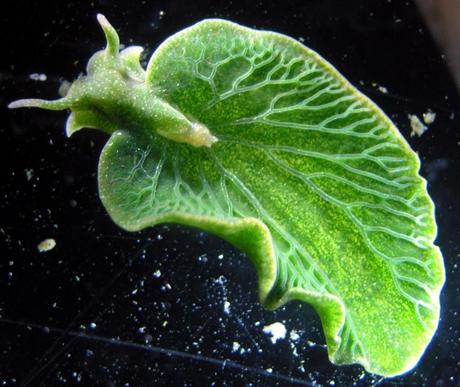Over at Five Books, linguist Daniel Everett discusses his recommended reading list and touches on several topics for which he is sort of famous: his early missionary work and eventual disillusionment, his years spent living with the Pirahã people deep in the Amazon, his claims that Pirahã lacks recursion and is a finite language, and his assessment or disagreement with Chomsky. During the course of his discussion, Everett lauds a hypothesis which is near to my affective heart and dear to my cognitive head:
Interviewer: So that gets right into our first book in a way because Sapir was famous for the Sapir–Whorf hypothesis about the relationship between language and thought.
Everett: Sapir’s 1921 book Language is still to me the most important pioneering book ever written on linguistics and I’m probably unique in holding that perspective – everybody knows it’s important but I just think it’s massively important. In it Sapir talks about bi-directional influences between culture and language and thought. A lot of people only give him credit for the idea that the language we speak can affect the way we think, which then became known as the Sapir–Whorf hypothesis, and Whorf actually learnt this from Sapir.
But Sapir didn’t stop with that, he said just as language can influence thought, culture can influence language. He argued that language clearly has some computational aspects that cannot be reduced to culture but there are a number of broad characteristics we find in individual languages that reflect the culture that they emerge from and I find that to be extremely pioneering – extremely prescient – and just incredibly innovative. I can’t think of anyone in the history of the study of language that has been more innovative in thought about language than Edward Sapir. He died in 1939 at the age of fifty-four, right at the beginning of World War Two. I think that’s one reason he had less influence.
Interviewer: A lot of people, myself included, have this kind of caricature of Sapir’s approach to language as if you don’t have the word for it you can’t think about it. Is that wrong? That’s not the Sapir-Whorf hypothesis at all?
That is one possible interpretation. You can take the Sapir-Whorf hypothesis and it has two manifestations: one is linguistic determinism and one is linguistic relativity. Linguistic determinism is the idea that the language we speak determines the way we can think. Linguistic relativity is a much weaker hypothesis and suggests that the language we speak affects in some way some of the ways we think when we need to think quickly. And this is confirmed in experiments…This suggests that language is a tool for thought but it isn’t thought. So we definitely think without language and I think that has to be true because otherwise we have no explanation of animals. The more we equate thinking with language, the less able we are to cater for the thought that my dog clearly has when she comes to me to go for a walk or understands the dozen or so words that I speak to her that I know she understands.
His claim that thought does not reduce to language poses problems for purely computational approaches to mind. Can we “think” without words or outside language? I think or feel so, and so probably do my dogs.
As much as I love dogs and would like to ponder the ways in which our home culture conditions their cognition, today I want to discuss an equally remarkable creature and amazing product of evolution: Elysia chlorotica, otherwise known as a sea slug. This is not, however, an ordinary sea slug, as its emerald leaf body suggests:

Elysia chlorotica (Credit: Patrick Krug)
If it looks like a leaf, it could just be camouflage, or it could be something else: a photosynthesizing animal. It has long been known that Elysia ingests algae and uses the photosynthetic products for its benefit. But it was not known, until recently, that this is not a simple case of ingestion, curation, and digestion: Elysia has incorporated algal photosynthetic genes into its chromosome. This is the finding of a recent paper in The Biological Bulletin, the fantastic details of which are covered by Science 2.0:
It has been known since the 1970s that E. chlorotica [the slug] “steals” chloroplasts from V. litorea [the algae] (called “kleptoplasty”) and embeds them into its own digestive cells. Once inside the slug cells, the chloroplasts continue to photosynthesize for up to nine months – much longer than they would perform in the algae. The photosynthesis process produces carbohydrates and lipids, which nourish the slug.
How the slug manages to maintain these photosynthesizing organelles for so long has been the topic of intensive study and a good deal of controversy. “This paper confirms that one of several algal genes needed to repair damage to chloroplasts, and keep them functioning, is present on the slug chromosome,” Pierce says. “The gene is incorporated into the slug chromosome and transmitted to the next generation of slugs.” While the next generation must take up chloroplasts anew from algae, the genes to maintain the chloroplasts are already present in the slug genome, Pierce says.
“There is no way on earth that genes from an alga should work inside an animal cell,” Pierce says. “And yet here, they do. They allow the animal to rely on sunshine for its nutrition. So if something happens to their food source, they have a way of not starving to death until they find more algae to eat.”
This biological adaptation is also a mechanism of rapid evolution, Pierce says. “When a successful transfer of genes between species occurs, evolution can basically happen from one generation to the next,” he notes, rather than over an evolutionary timescale of thousands of years.
This is the kind of science, and horizontal gene transfer evolution, that really gets my mythic blood flowing and raises all kinds of future Oz possibilities. Feeding from the sun is a bewitching idea. GMO humans anyone?
— Cris


